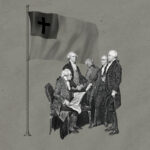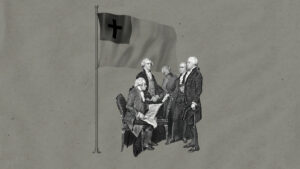Today is the International Day for the Remembrance of the Slave Trade and Its Abolition, a commemoration by the United Nations Educational, Scientific, and Cultural Organization (UNESCO) intended to “inscribe the tragedy of the slave trade in the memory of all peoples.”
Here are nine things you should know about the slave trade and its abolition:
1. The date of the International Day for the Remembrance of the Slave Trade and Its Abolition was chosen to honor the beginning of the slave revolt on the French island of Santo Domingo (today Haiti and the Dominican Republic) in August 1791. Although it took more than a decade of struggle, the people won independence from France and became the first country to be founded by former slaves. The Haitian Revolution also emboldened the anti-slavery movement in Europe and led to the abolition of the trans-Atlantic slave trade.
2. The first slave voyage direct from Africa to the Americas is believed to have sailed in 1526. But even before then, Africans were brought over as slaves directly from Europe, and native inhabitants of America were enslaved by European explorers. On his first day in the New World, Christopher Columbus wrote in his journal that he had ordered six of the people of the West Indies to be seized because he believed they would make good servants.
3. Because of inadequate records, the number of people taken from Africa through enslavement remains unknown. Based on the shipping records historians estimate that between 9 million and 11 million people were taken out of Africa by European slave traders and delivered alive on the other side of the Atlantic. An untold number, however, died resisting capture in the “slave raids,” died during the forced march to the coastal regions, died in slave forts while awaiting transport, and died en route as they travelled across the ocean. The lowest number for the total loss of life is estimated to be around 20 million people.
4. A triangular trade route across the Atlantic took goods from Europe to Africa, African slaves to the Americas and West Indies, and mostly raw materials produced on the plantations back to Europe. The leg of the trade route that transported slaves is known as the “Middle Passage.” Depending on the weather, this voyage could take between three to six months (by the end to the slave trade era it took six weeks or less). The passage was so brutal that the ships not only lost many of the people being transported as slaves but the crew was well. The mortality rate for sailors on slave ships was approximately 20 percent.
5. Slave ships varied in size and passenger capacity, but they all shared the common trait of being inhumanly brutal. African slaves spent most of their day below deck in cramped quarters and were brought on deck only for short periods of forced exercise. Research published in 1794 calculated that a man was given a space of 6 feet by 1 foot 4 inches; a woman 5 feet by 1 foot 4 inches; and girls 4 feet 6 inches by 1 foot. The air below deck was hot, stale, and filled with the incessant smell of vomit, sweat, sickness, and death. Water was restricted to 24 ounces a day—the equivalent to two 12-ounce soda cans of fluid per day—and the diet consisted mainly of horse-beans and rice.
6. Only a tiny percentage of the Africans transported in the slave trade came directly to North America. Approximately 4 percent—about 388,000—arrived directly, with another 60,000 to 70,000 believed to have also arrived after first stopping in the Caribbean. The vast majority of African slaves were sent to the Caribbean and South America. Almost half of all slaves transported from Africa—4.86 million—were sent to Brazil.
7. The trans-Atlantic slave trade that brought slaves to the Unites States was dwarfed by the internal domestic slave trade. Even after Congress passed the Act Prohibiting Importation of Slaves, which took effect in 1808, the domestic slave trade grew as the African slave trade tripled up to the period of the Civil War. Approximately 1.2 million men, women, and children—most of whom born in America—were displaced by this domestic slave trade.
8. The trans-Atlantic slave trade was only about half the total slave trade out of Africa. From AD 650 to 1900, Islamic traders are estimated to have exported 10 million slaves into northern Africa, Arabia, Yemen, Iraq, Iran, and India. They were shipped across the Sahara Desert, the Red Sea, and the Indian Ocean. Many millions more were also enslaved but kept on the continent of Africa.
9. In the late 1700s Christians began mobilizing in North America and Western Europe to end the trans-Atlantic slave trade. “The main thrust of Christian abolitionism emerged from the evangelical revival of the 18th century,” notes the BBC, “which spawned dynamic Christians with clear-cut beliefs on morality and sin and approached the issue of slavery from this standpoint.” The Quakers were the first religious group to officially form an abolition movement in the U.S. and U.K., though they were quickly joined by Baptists, Congregationalists, Methodists, and Presbyterians. In 1789 the evangelical convert and British politician William Wilberforce began introducing bills that would abolish the trade. He would reintroduce such legislation every year until the 1807 when the Abolition of the Slave Trade Act finally abolished the trans-Atlantic slave trade throughought the British Empire. The king of Denmark, Christian VII, also signed a decree in 1792 banning Danish participation in the trade, though it did not take effect until 1803. Due to the influence of the British the Vienna Declaration—credited with having introduced abolition of the slave trade as a principle in general international law—was signed by Austria, Britain, France, Portugal, Prussia, Russia, Spain, and Sweden in 1815. In 1926 the Convention to Suppress the Slave Trade and Slavery was adopted as an international treaty. To date, 99 nations have signed the treaty, with the most recent signatory, Zambia, added in 1973.
Other posts in this series:
Solar Eclipses • Alcohol Abuse in America • History of the Homeschooling Movement • Eugenics • North Korea • Ramadan • Black Hebrew Israelites • Neil Gorsuch and Supreme Court Confirmations • International Women’s Day • Health Effects of Marijuana • J. R. R. Tolkien • Aleppo and the Syrian Crisis • Fidel Castro • C.S. Lewis • ESV Bible • Alzheimer’s Disease • Mother Teresa • The Opioid Epidemic • The Olympic Games • Physician-Assisted Suicide • Nuclear Weapons • China’s Cultural Revolution • Jehovah’s Witnesses • Harriet Tubman • Autism • Seventh-day Adventism • Justice Antonin Scalia (1936–2016) • Female Genital Mutilation • Orphans • Pastors • Global Persecution of Christians (2015 Edition) • Global Hunger • National Hispanic Heritage Month • Pope Francis • Refugees in America • Confederate Flag Controversy • Elisabeth Elliot • Animal Fighting • Mental Health • Prayer in the Bible • Same-sex Marriage • Genocide • Church Architecture • Auschwitz and Nazi Extermination Camps • Boko Haram • Adoption • Military Chaplains • Atheism • Intimate Partner Violence • Rabbinic Judaism • Hamas • Male Body Image Issues • Mormonism • Islam • Independence Day and the Declaration of Independence • Anglicanism • Transgenderism • Southern Baptist Convention • Surrogacy • John Calvin • The Rwandan Genocide • The Chronicles of Narnia • The Story of Noah • Fred Phelps and Westboro Baptist Church • Pimps and Sex Traffickers • Marriage in America • Black History Month • The Holocaust • Roe v. Wade • Poverty in America • Christmas • The Hobbit • Council of Trent • Halloween and Reformation Day • Casinos and Gambling • Prison Rape • 16th Street Baptist Church Bombing • Chemical Weapons • March on Washington • Duck Dynasty • Child Brides • Human Trafficking • Scopes Monkey Trial • Social Media • Supreme Court’s Same-Sex Marriage Cases • The Bible • Human Cloning • Pornography and the Brain • Planned Parenthood • Boston Marathon Bombing • Female Body Image Issues • Islamic State
Download your free Christmas playlist by TGC editor Brett McCracken!
 It’s that time of year, when the world falls in love—with Christmas music! If you’re ready to immerse yourself in the sounds of the season, we’ve got a brand-new playlist for you. The Gospel Coalition’s free 2025 Christmas playlist is full of joyful, festive, and nostalgic songs to help you celebrate the sweetness of this sacred season.
It’s that time of year, when the world falls in love—with Christmas music! If you’re ready to immerse yourself in the sounds of the season, we’ve got a brand-new playlist for you. The Gospel Coalition’s free 2025 Christmas playlist is full of joyful, festive, and nostalgic songs to help you celebrate the sweetness of this sacred season.
The 75 songs on this playlist are all recordings from at least 20 years ago—most of them from further back in the 1950s and 1960s. Each song has been thoughtfully selected by TGC Arts & Culture Editor Brett McCracken to cultivate a fun but meaningful mix of vintage Christmas vibes.
To start listening to this free resource, simply click below to receive your link to the private playlist on Spotify or Apple Music.


































